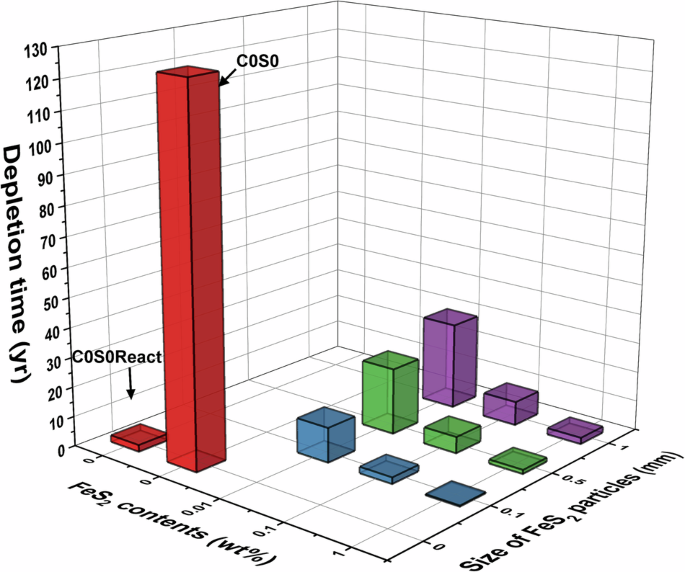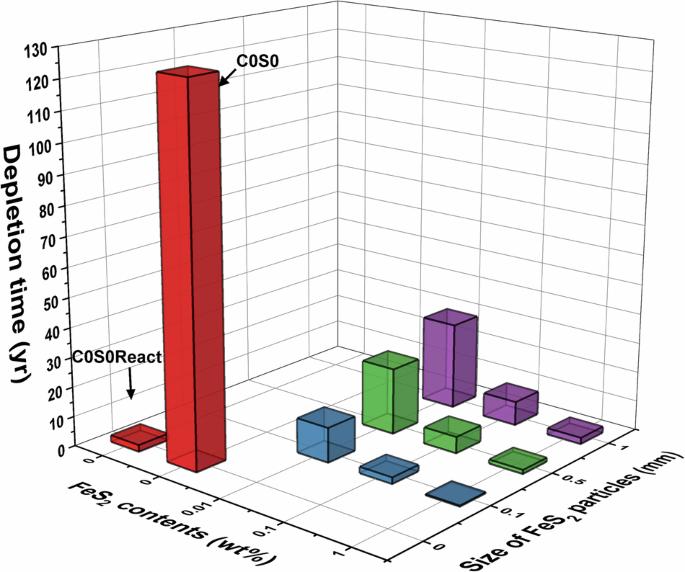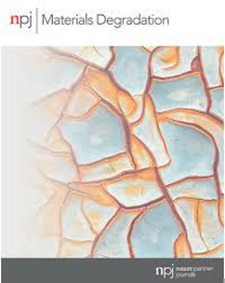Oxic corrosion model for KAERI Reference disposal system via O2 consumption reactions and mixed-potential theory
IF 7.6
2区 材料科学
Q1 MATERIALS SCIENCE, MULTIDISCIPLINARY
引用次数: 0
Abstract
The durability of copper (Cu) canisters against corrosion is critical for the licensing of deep geological repositories. Assessing oxic corrosion, a primary degradation mechanism, is essential for ensuring the reliability of such repositories. Due to the complex interactions influencing oxic corrosion, a comprehensive model is necessary for evaluating Cu canister corrosion. This study develops a model for the KAERI Reference Disposal System (KRS), incorporating mixed-potential theory with key O2 consumption reactions, including Cu corrosion, Cu(I) oxidation, FeS2 oxidation, aerobic microbial activity, and O2 dissolution and consumption. Simulation of 11 scenarios revealed that the representative KRS case would experience a maximum corrosion depth of 9.3 μm on the Cu canister after 2.3 years due to oxic corrosion, under conditions that are unfavorable for the initiation of pitting corrosion. These results suggest that oxic corrosion is not a threat to the isolation of spent nuclear fuels in KRS.


通过 O2 消耗反应和混合电位理论建立的 KAERI 参考处置系统氧化腐蚀模型
铜(Cu)罐的耐腐蚀性对于深层地质处置库的许可至关重要。氧腐蚀是一种主要的降解机制,评估氧腐蚀对于确保此类处置库的可靠性至关重要。由于影响氧腐蚀的相互作用十分复杂,因此需要一个全面的模型来评估铜罐腐蚀。本研究为 KAERI 参考处置系统(KRS)开发了一个模型,将混合电位理论与关键的氧气消耗反应相结合,包括铜腐蚀、Cu(I)氧化、FeS2 氧化、好氧微生物活动以及氧气溶解和消耗。对 11 种情况的模拟显示,在不利于点蚀发生的条件下,具有代表性的 KRS 情况将在 2.3 年后由于氧腐蚀而在铜罐上形成最大 9.3 μm 的腐蚀深度。这些结果表明,氧腐蚀不会对 KRS 中乏核燃料的隔离造成威胁。
本文章由计算机程序翻译,如有差异,请以英文原文为准。
求助全文
约1分钟内获得全文
求助全文
来源期刊

npj Materials Degradation
MATERIALS SCIENCE, MULTIDISCIPLINARY-
CiteScore
7.80
自引率
7.80%
发文量
86
审稿时长
6 weeks
期刊介绍:
npj Materials Degradation considers basic and applied research that explores all aspects of the degradation of metallic and non-metallic materials. The journal broadly defines ‘materials degradation’ as a reduction in the ability of a material to perform its task in-service as a result of environmental exposure.
The journal covers a broad range of topics including but not limited to:
-Degradation of metals, glasses, minerals, polymers, ceramics, cements and composites in natural and engineered environments, as a result of various stimuli
-Computational and experimental studies of degradation mechanisms and kinetics
-Characterization of degradation by traditional and emerging techniques
-New approaches and technologies for enhancing resistance to degradation
-Inspection and monitoring techniques for materials in-service, such as sensing technologies
 求助内容:
求助内容: 应助结果提醒方式:
应助结果提醒方式:


